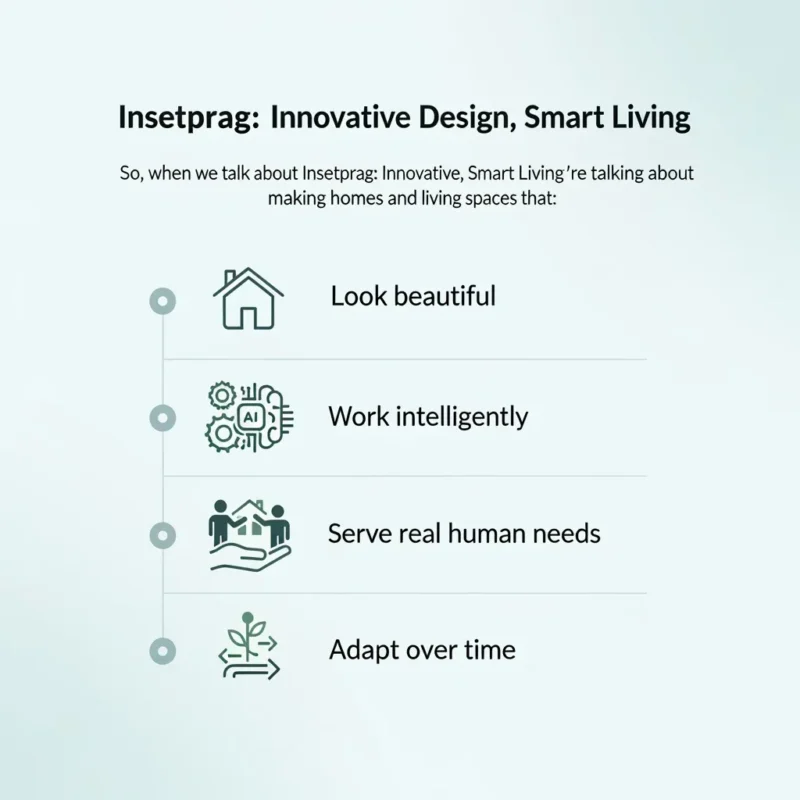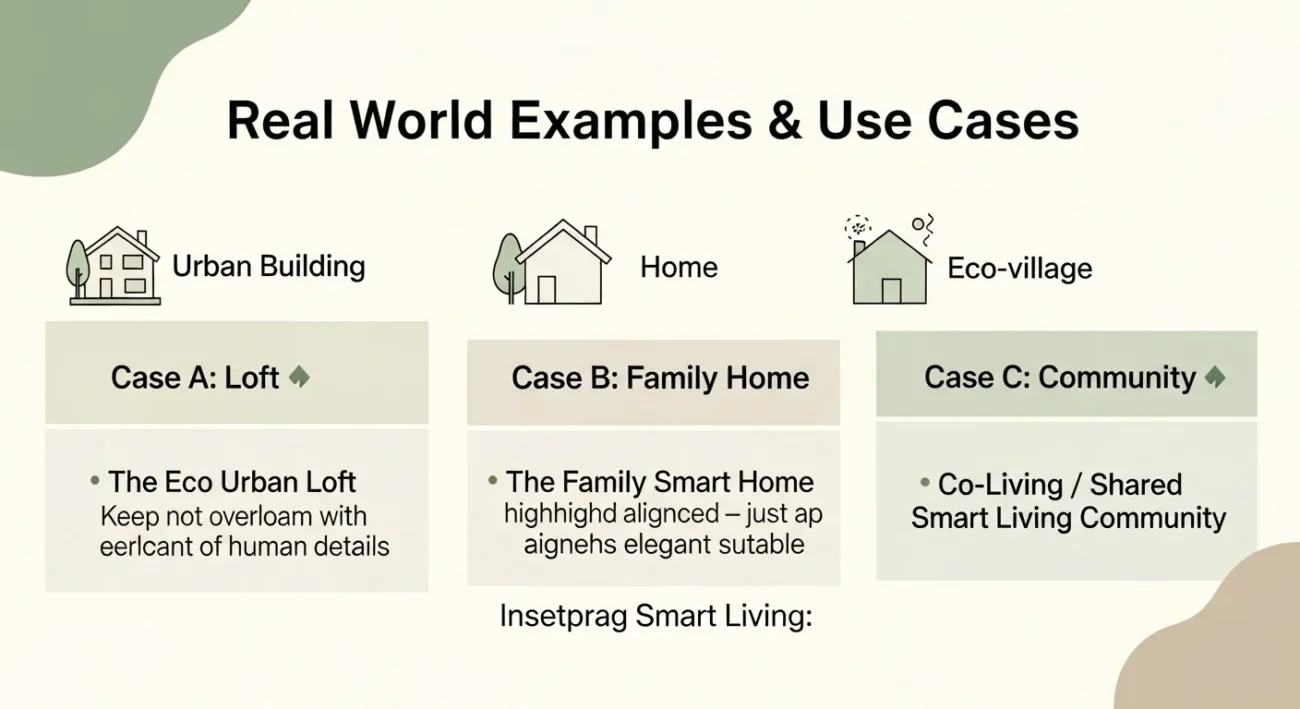Imagine walking into a home that knows your preferences before you say a word lights adjust, temperature shifts just right, and your space feels alive in a subtle, comforting way. That’s the promise behind Insetprag: Innovative Design, Smart Living. It’s not just a slogan or gimmick it’s a design philosophy, a technological framework, and a living ideal.
What Is “Insetprag”
The term “Insetprag” may sound new or unfamiliar. It’s a blend of two ideas:
- Inset: suggesting something nested, embedded, or integral
- Prag (from “pragmatic”): meaning grounded, purposeful, practical
Put together, Insetprag refers to design trends and systems that are deeply integrated (inset) and yet purpose driven (pragmatic). In essence, it is innovative design with smart living built in, not tacked on as an afterthought.

Some articles describe Insetprag as a “framework” for innovation and adaptability. Others emphasize how it combines design, technology, and sustainability in modern living. Rather than just slapping gadgets into a house, Insetprag demands cohesion: form, function, and context working hand in hand.
How Insetprag Combines Innovation + Practicality in Design
To really see how Insetprag works, let’s break down key pillars where it plays out in real design and smart living.
Design That Speaks Human, Not Machine
Insetprag driven design doesn’t scream “tech lab.” Rather, technology is invisible, unobtrusive, and human centric.
- Surfaces or furniture might have sensors baked in, but look clean and elegant.
- Materials are chosen not only for aesthetics but durability, climate, and eco friendliness.
- Biophilic design (bringing nature inside through plants, daylight, organic textures) is embraced, so the space feels alive.
Smart Systems That Learn & Adapt
Insetprag living spaces often include systems that adjust based on context.
- AI-powered thermostats & lighting that sense presence, external weather, and habits.
- Real-time energy analytics so you see how much power or water you’re using, and where you might save.
- Context-aware shading or windows that tint or open based on daylight, weather, or privacy needs.
- Automation schedules that adjust lighting, HVAC, and appliances based on time, occupancy, or mood.
The key is: these are not just gadgets. They learn not necessarily “artificial general intelligence,” but adaptive rules and patterns.
Sustainability & Efficiency
- Building-integrated solar elements windows or roofs that generate energy
- Recyclable, low-impact materials in finishes, insulation, and furniture
- Water reuse systems (greywater recycling, rain harvesting)
- Passive heating, cooling, and day lighting design to reduce energy demands
Adaptable Spaces & Scalability
Your life changes. Your home should too.
Insetprag design allows:
- Flexible room layouts (movable partitions, sliding walls)
- Modular furniture that can be reconfigured
- Future wiring/infrastructure ready (so adding sensors or systems later isn’t a nightmare)
- Scalable systems (start small, extend later)
Insetprag Smart Living

Table of Key Dimensions of Insetprag Design & Smart Living
| Dimension | Insetprag Approach | Why It Matters |
|---|---|---|
| Design Integration | Sensors, systems, and structure are built in from the start | Avoids the “tech stuck on top” look |
| Adaptive Systems | AI, context aware control, learning behaviour | More comfort, less manual fuss |
| Sustainability | Renewable energy, passive design, resource recycling | Saves money, reduces environmental impact |
| Flexibility & Scalability | Modular rooms, future proof wiring | Homes evolve with life changes |
| Transparency & Control | Real-time analytics visible to users | Empowers users rather than hiding complexity |
| Community Scale | Shared systems, neighborhood coordination | Extends benefits beyond a single household |
FAQs
Can Insetprag be applied to existing homes (retrofit)?
Yes though it’s harder than starting fresh. You’d gradually introduce sensor systems, smart appliances, and flexible elements. The key is selecting subsystems that don’t require structural overhaul (e.g. smart thermostats, smart lighting, modular partitions). But deep integration (like built in power routing) is more achievable in new builds.
Do I need expensive tech to achieve smart living?
Not necessarily. Pinsetter’s philosophy values pragmatism. Begin with basic sensors and automation, use open standards, and expand gradually. You can still get a taste of smart living without a million-dollar budget.
What’s the expected payback period (cost vs savings)?
It depends on region, energy costs, scale, and design quality. In well-designed systems, many homeowners see ROI in 5–10 years via energy and water savings. In some high cost energy areas, it could be faster. Always run feasibility analysis.
Is it safe to trust AI or automated systems in my home?
Safety is a priority. Design should include failsafes, manual overrides, and robust security. Systems should notify users of abnormal behavior and require human confirmation for critical changes. No system should act in a way you can’t control.
Can Insetprag help in small spaces or apartments?
Absolutely. In fact, the benefits may be more visible: smart lighting and climate control in small spaces make big perceived difference. Flexible furniture, adaptive partitions, and sensor based controls fit well in apartments too.
Final Thought
“Insetprag: Innovative Design, Smart Living” is more than a catchy phrase it’s a promising direction for how homes (and communities) could evolve. When design is woven together with technology, not tacked on later, the result can be living spaces that are not just more comfortable, but more humane and responsive.

